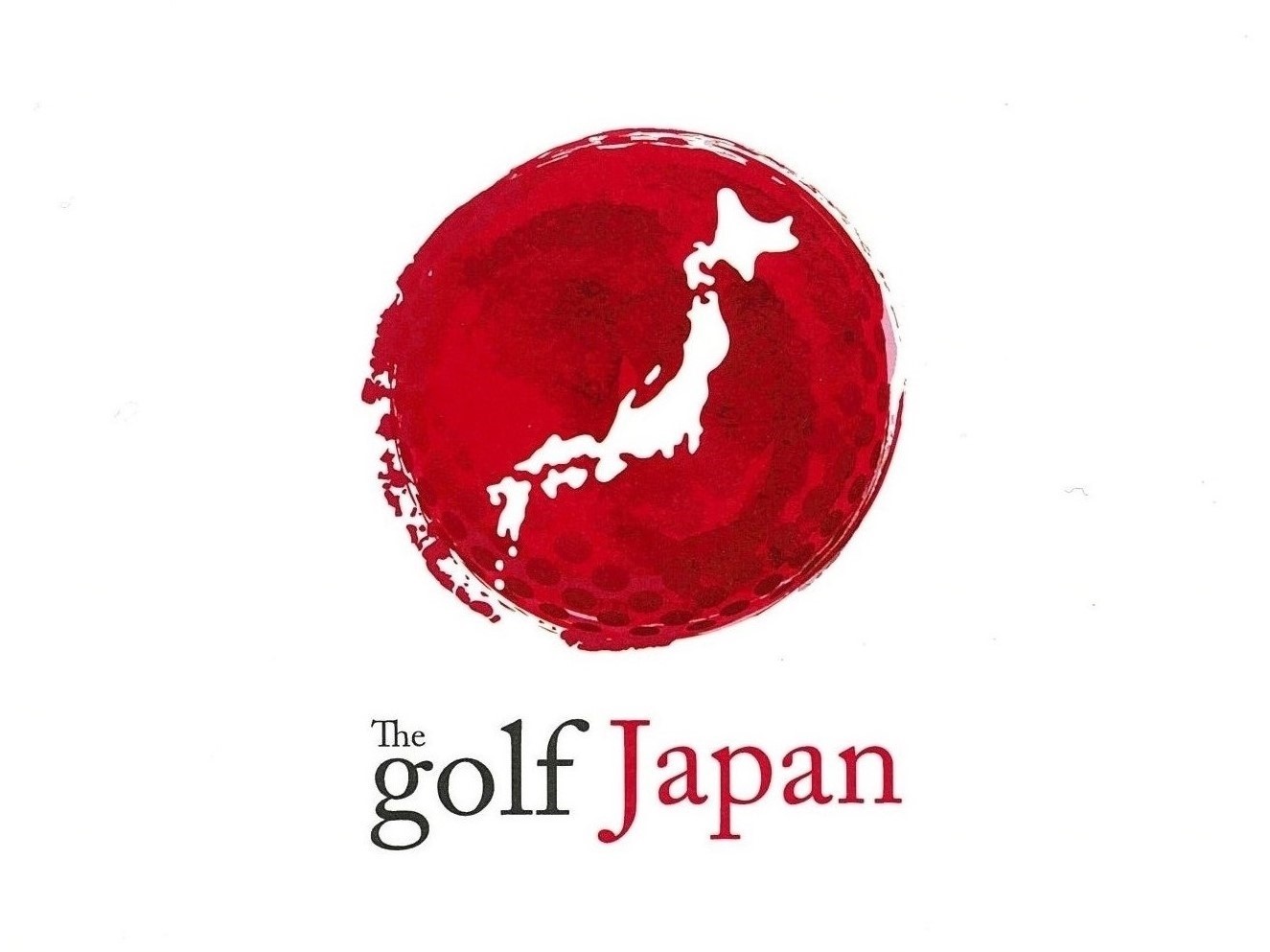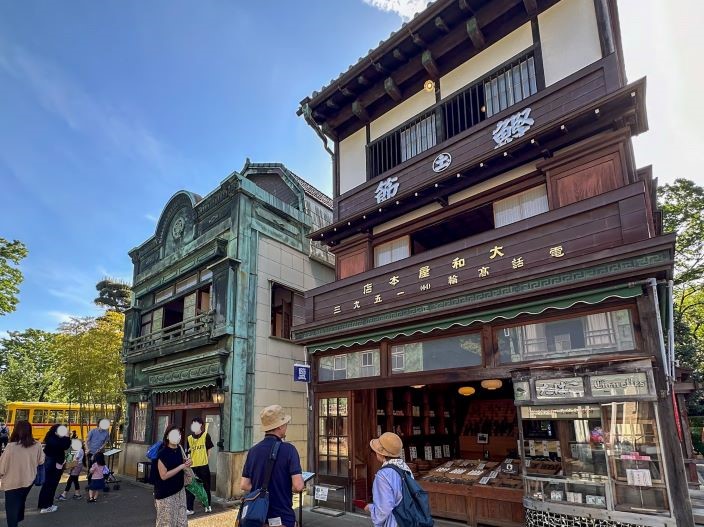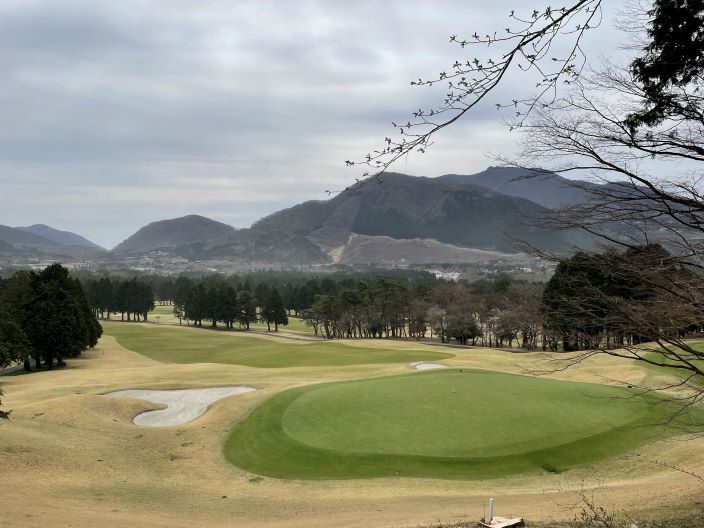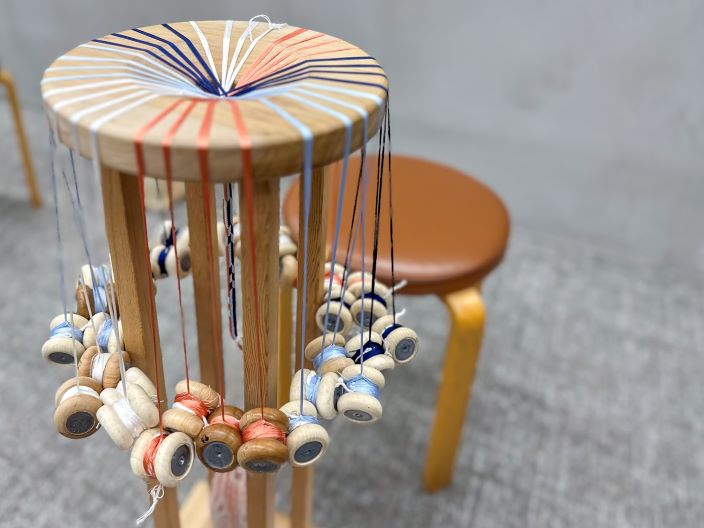Golden Week, that is an irreplaceable holiday for Japanese people. From the end of April to the beginning of May, there are some public holidays and this is a big chance to travel both abroad and domestic or just go out for many Japanese people.
Take advantage of that opportunity, I went to “Edo-Tokyo Open Air Architectural Museum” in Koganei city, Tokyo during Golden Week.
“Edo-Tokyo Open Air Architectural Museum” was opened in 1993 as the Tokyo Metropolitan Government Edo-Tokyo Museum Annex to relocate, reconstruct, preserve and exhibit historical buildings of great cultural value that are impossible to preserve at their original location, as well as to pass on these valuable cultural heritages to future generations. Well worth seeing open-air museum with about 30 buildings from the Edo period to the early Showa period on display.
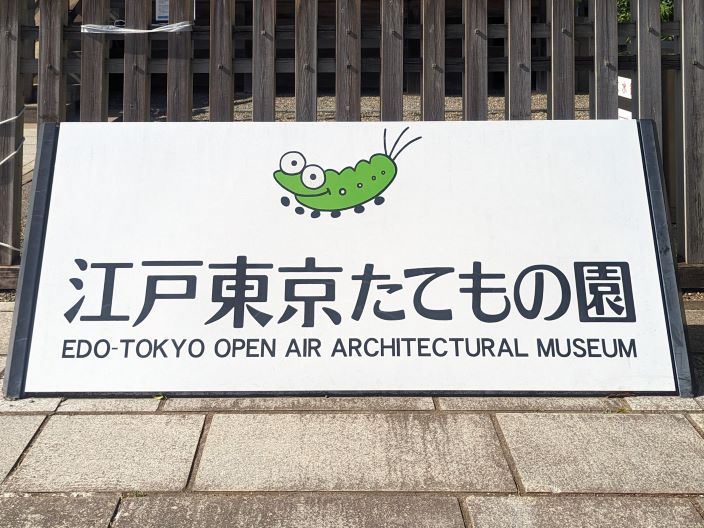
Mascot character: Edomaru was created by Hayao Miyazaki, a famous Japanese animater who won the Academy Award 2024 for “The Boy and The Heron”. Since the headquarters of Studio Ghibli is also located in Koganei City, Hayao Miyazaki often visited the Edo-Tokyo Open Air Architectural Museum. The colors of Edomaru are suitable for the mascot of an open air museum located in a natural setting.
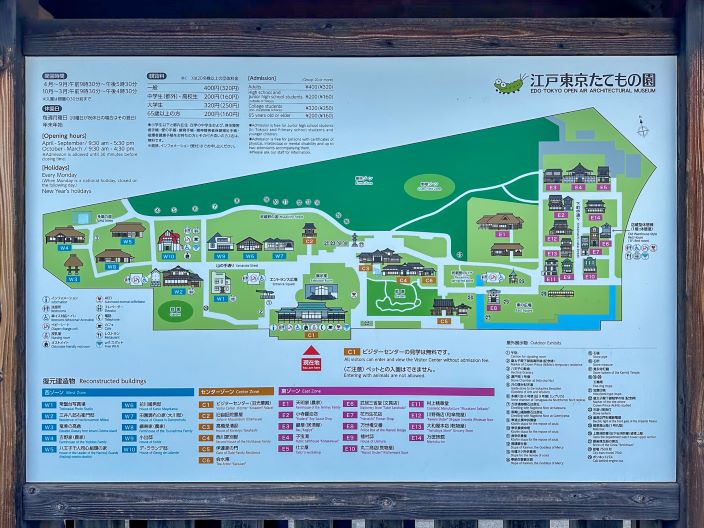
The museum is divided into the West Zone, Center Zone, and East Zone. You can enter the museum from the Visitor Center in the Center Zone and walk around as you like. I started my visit from the “East Zone” where the Children’s Day event was being held.
East Zone
The East Zone is where you can feel the downtown atmosphere of the Taisho and Showa eras. Why do I feel nostalgic even though I was born and raised in a different era? This area was also the model for Studio Ghibli’s hit movie ” Spirited Away”.
Stationery store “Takei Sanshodo” was established in the early Meiji period (1868-1877). It first sold calligraphy goods to wholesale customers, and later started selling to retail. The building was built after the Great Kanto Earthquake. Inside the store are paulownia drawers packed to the ceiling. This is said to be modeled after Kamaji’s (Boiler Geezer) boiler room in “Spirited Away”.
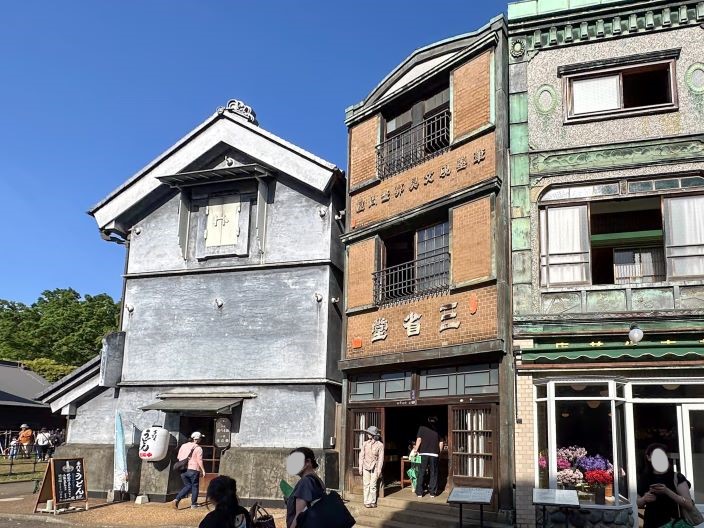
Public bathhouse “Kodakara-yu” at the end of the downtown street was also a great source of inspiration for the bathhouse in “Spirited Away”. The model for the bathhouse is said to be a mixture of various elements, including Dogo Onsen in Ehime Prefecture and other hot springs, but it was this scenery that greatly inspired the setting of the movie, “a public bath rising in the corner of a shopping street”. The bathhouse is a huge building, so it is no exaggeration to say that you can enter the world of “Spirited Away” here, regardless of whether it was modeled as a building or not!
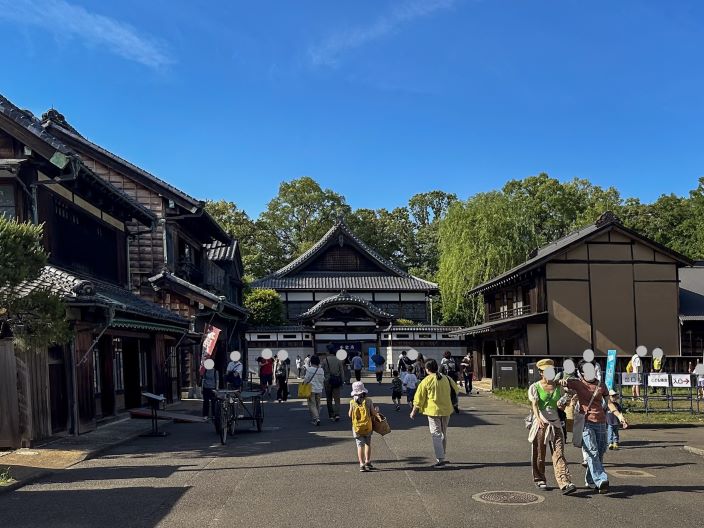
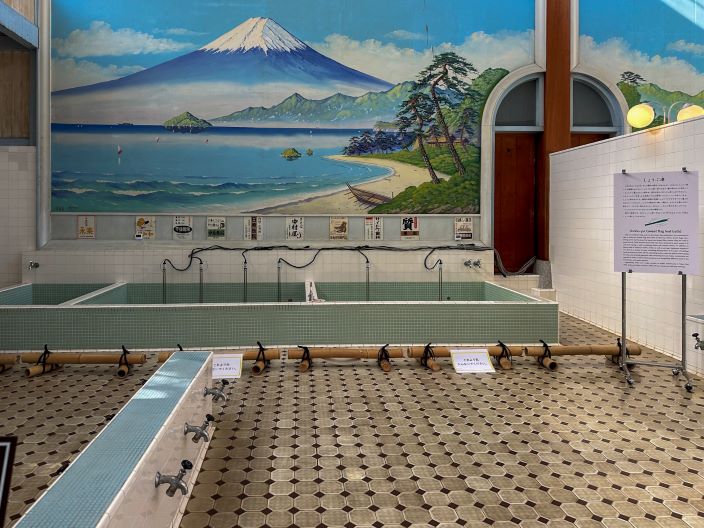
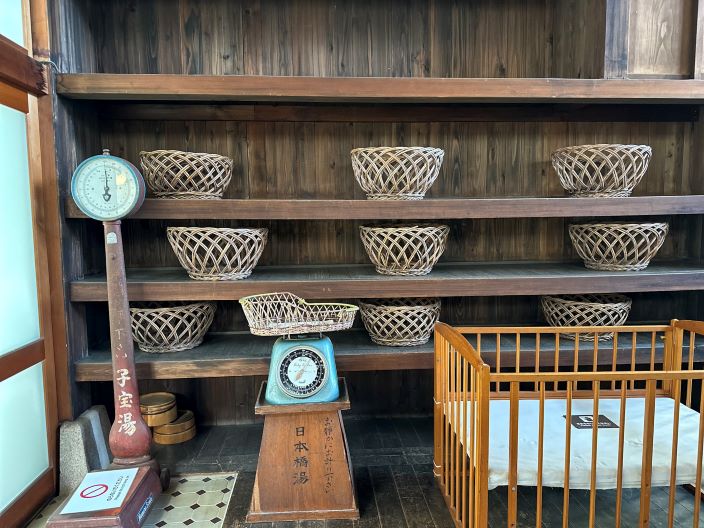
Also, buildings from the popular manga “Golden Kamuy” were here and there…. I have of course watched “Spirited Away” and have read “Golden Kamuy”, so perhaps I felt nostalgic. Not only for fans of these works, but also just strolling along this “downtown street” with its Taisho and Showa-era retro atmosphere is an interesting experience.
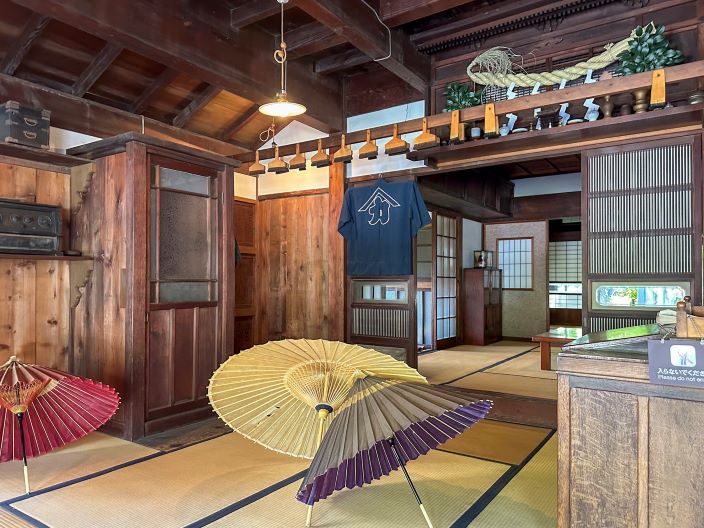
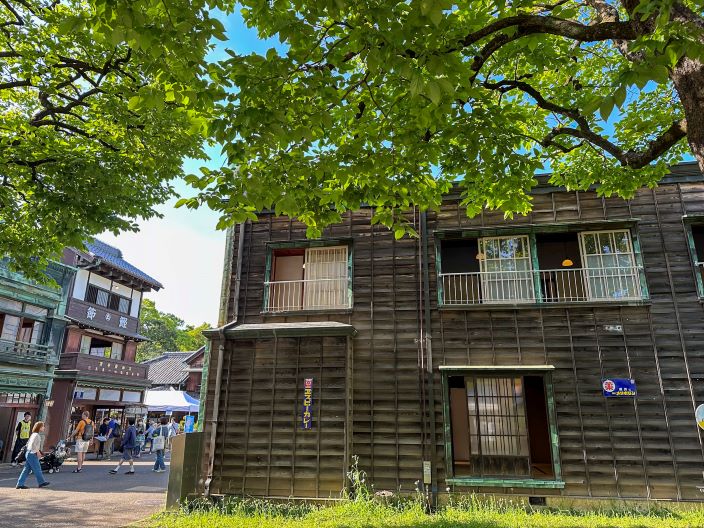
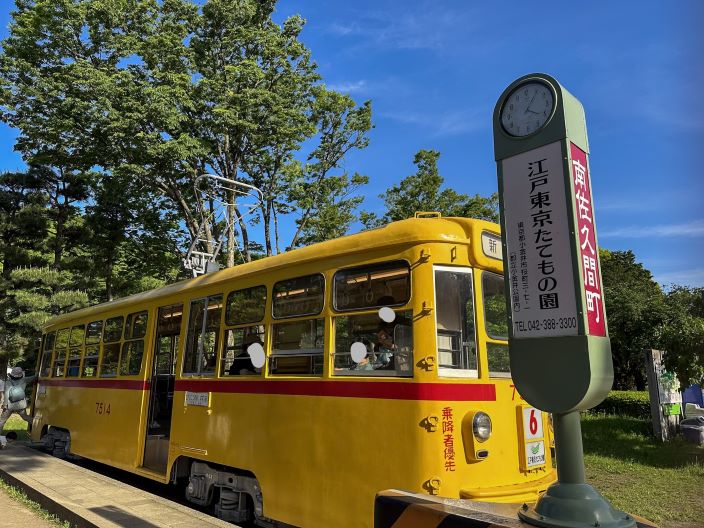
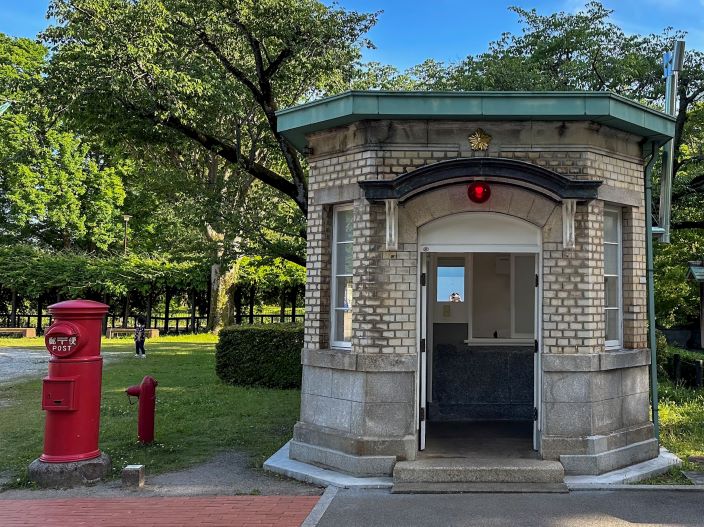
Center Zone
The center zone where you first set foot. The Visitor Center (Former “Kokaden” Palace), which serves as the entrance to the park, was built in 1940 for the 2,600th anniversary of the first Emperor’s accession to the throne. It was moved to the current Koganei Park in 1941 as the Visitor Center of this museum.
In addition to information, the center has an introductory exhibit and library to help visitors explore the park, a museum store that sells goods featuring the mascot character “Edomaru,” and a café.
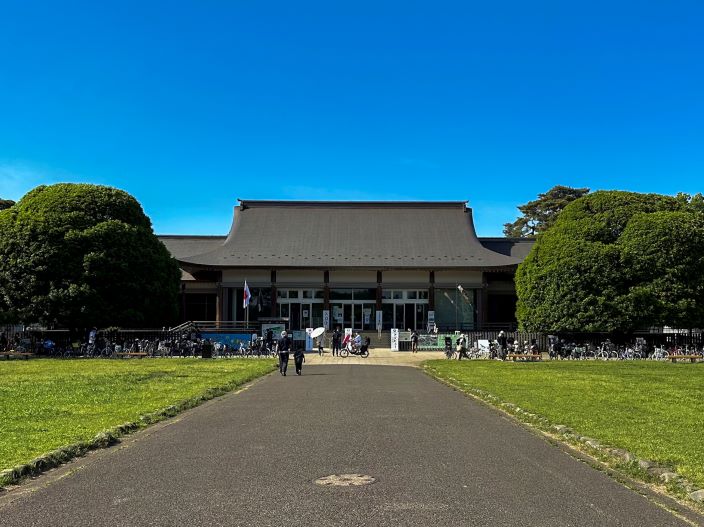
The Center Zone is also home to the “House of Korekiyo Takahashi“, the Akasaka residence of Korekiyo Takahashi, the 20th Prime Minister of Japan. Visitors can take off their shoes and take a look around the house. You can go up to the second floor, and the room on the second floor, which was used as Takahashi’s study and bedroom, and was the site of the February 26 coup in1936. (Korekiyo Takahashi, then Minister of Finance, was shot by young rebel officers and died.)
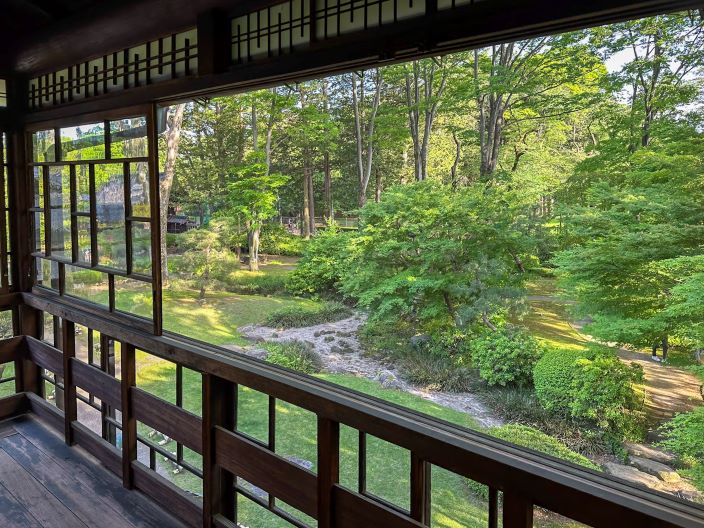
West Zone
Finally, I came to the West Zone. Here, visitors can see “House of Kunio Maekawa“, the residence of Kunio Maekawa, the architect who led modern architecture in Japan. The house was built in 1942 in Kami-Osaki, Shinagawa Ward, at a time when building materials were difficult to obtain due to the wartime regime. Because of the war, the building’s size was also limited. I had imagined that the house would be full of individuality since it was the residence of a Japanese modernist master, but I was disappointed to find that it was more modest than I had expected. Now that I think about it, I think he dared to make the house black and pure Japanese style so that it would not stand out under the war.
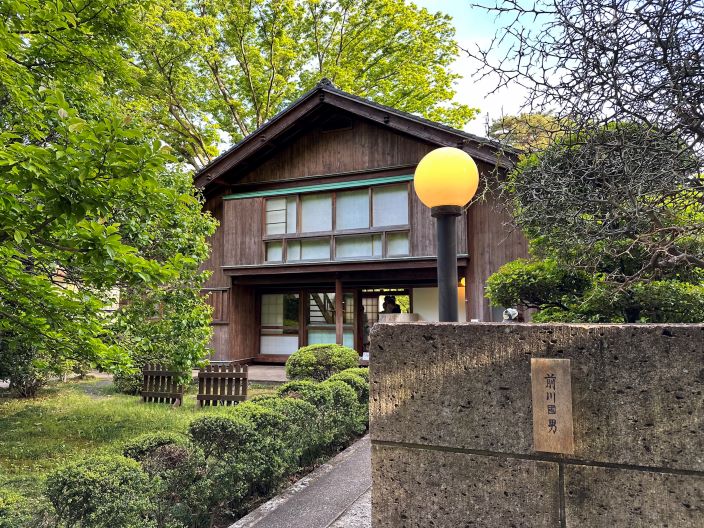
Upon entering, one cannot imagine how modern and sophisticated it is from the outside. It is difficult to explain in words due to my lack of knowledge, but the interior is simply cool! It is hard to believe that this house was designed 80 years ago, but it still looks very attractive today. The living room has a very Japanese atmosphere with lots of wooden furniture, but the tiled bathroom and kitchen make you feel as if you are in France.
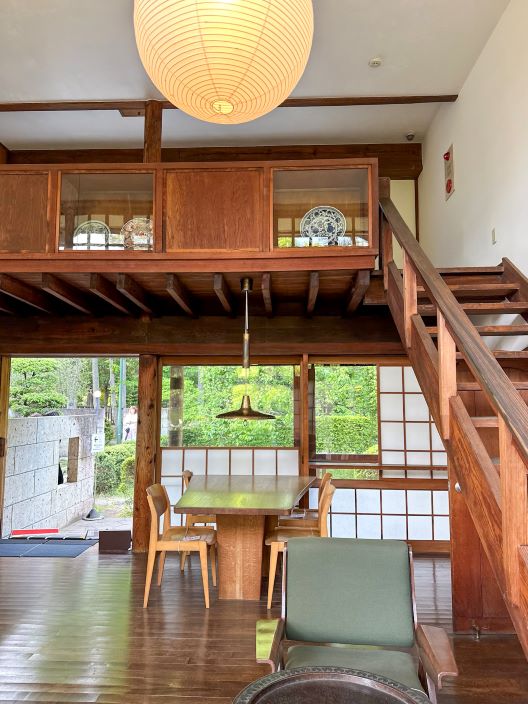
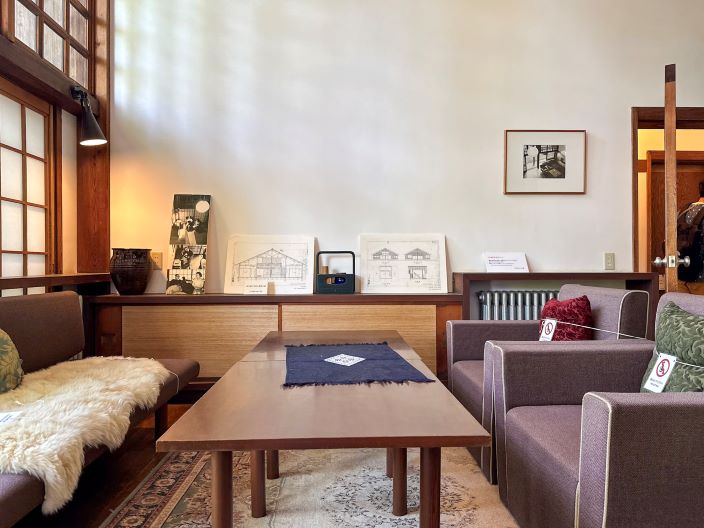
We’ve introduced “Edo-Tokyo Open-Air Architectural Museum” in Koganei City, Tokyo. There are many other historically important and fascinating buildings in the park, so please be sure to visit.
Edo-Tokyo Open Air Architectural Museum
| Address | 3-7-1 Sakuracho, Koganei-shi, Tokyo (inside Koganei Park) |
| TEL | +81-42-388-3300 |
| Open Hour | April~September:9:30 AM~5:30PM October~March:9:30 AM~4:30PM ※Admission is allowed until 30 minutes before the closing time. |
| Close | Every Monday (When Monday is a national holiday, closed on the following day.) New Year’s holidays. |
| Admission Fee | 【Adults】JPY 400- 【65-years old or older】JPY 200- 【College students (incl. vocational schools)】JPY 320- 【High school and junior high school students】JPY 200- 【Primary school students and younger children】Free |
| Website | https://www.tatemonoen.jp/english/ |
